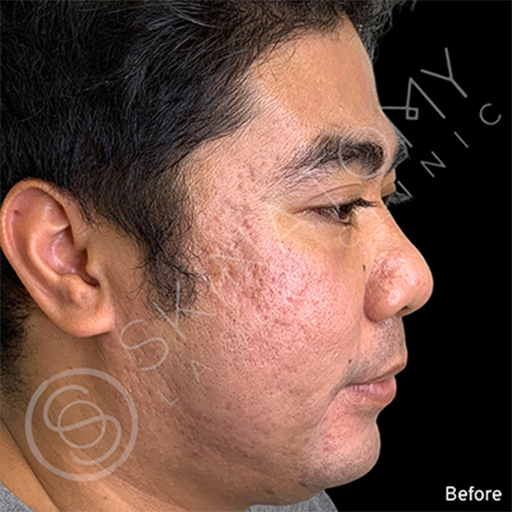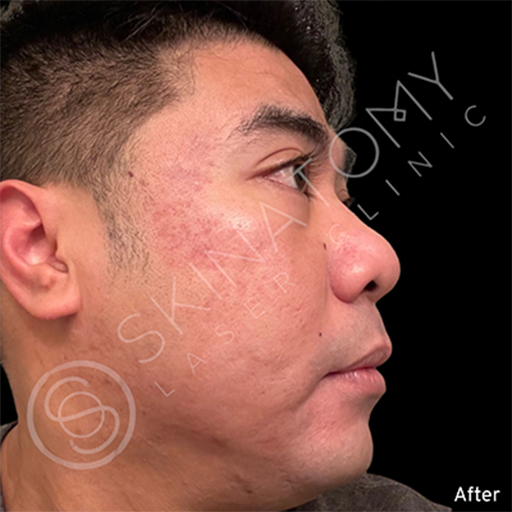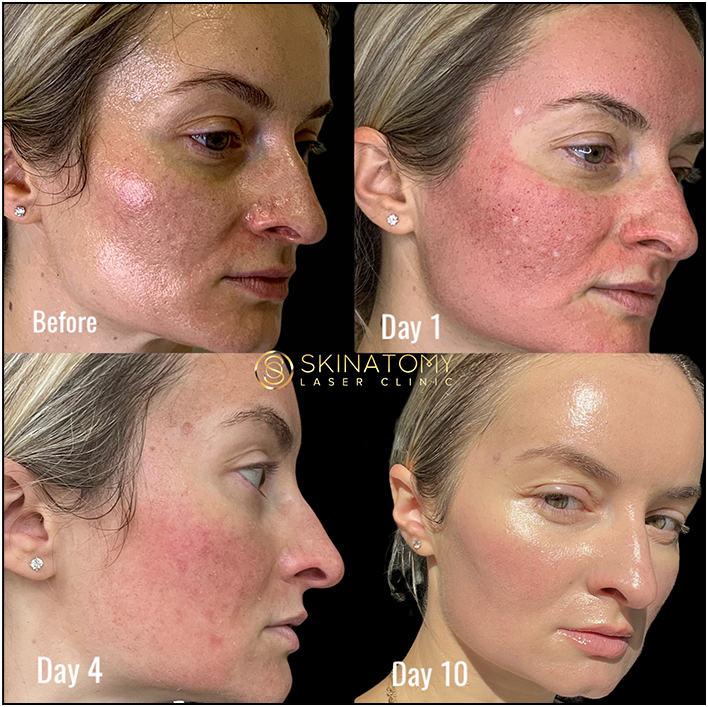Acne scars are the result of inflammation of acne blemishes. The acne pore swells and a breakdown occurs in the wall of the pore.
During the healing process, the body produces collagen—a substance that gives the skin support. If the body produces too little or too much collagen, you will see a scar.
The type of scar depends on how much collagen your body makes. There are various types of acne scars Depressed Scars, which are indented, Hypertrophic (raised scars) and PIH Post Inflammatory Hyperpigmentation. Below is a list and description of various types of Acne Scars.
Boxcar scars – are broad, usually box-like depressions with sharply defined edges. They most often form on areas like the lower cheeks and jaw, where skin is relatively thick.
Ice pick scars – are smaller, more narrow indentations that point down into the skin’s surface. These scars are common on the cheeks.
Rolling scars – have a varying depth, with sloping edges that make skin appear wavy and uneven.
Atrophic scars – are flat, shallow depressions that heal below the top layer of skin. These scars are commonly caused by severe cystic acne. However, other types of acne can cause them as well.
The appearance of atrophic acne scars can vary depending on a person’s history with acne. There are three types of atrophic scars:
Hypertrophic and keloid scars – are raised lumps of scar tissue where the acne once was. This is a result of scar tissue build up from previous acne.
Post-inflammatory hyperpigmentation – is a discoloured patch of skin remaining on the skin after acne has healed. This usually heals on it’s own several months later. Alternatively professional treatments may be required if the discolouration has not cleared on its own.



Professional laser and injectable treatments are required to treat these forms of scarring. Treatments will assist to improve the appearance depth, width and colour of scars providing a more even skin surface.